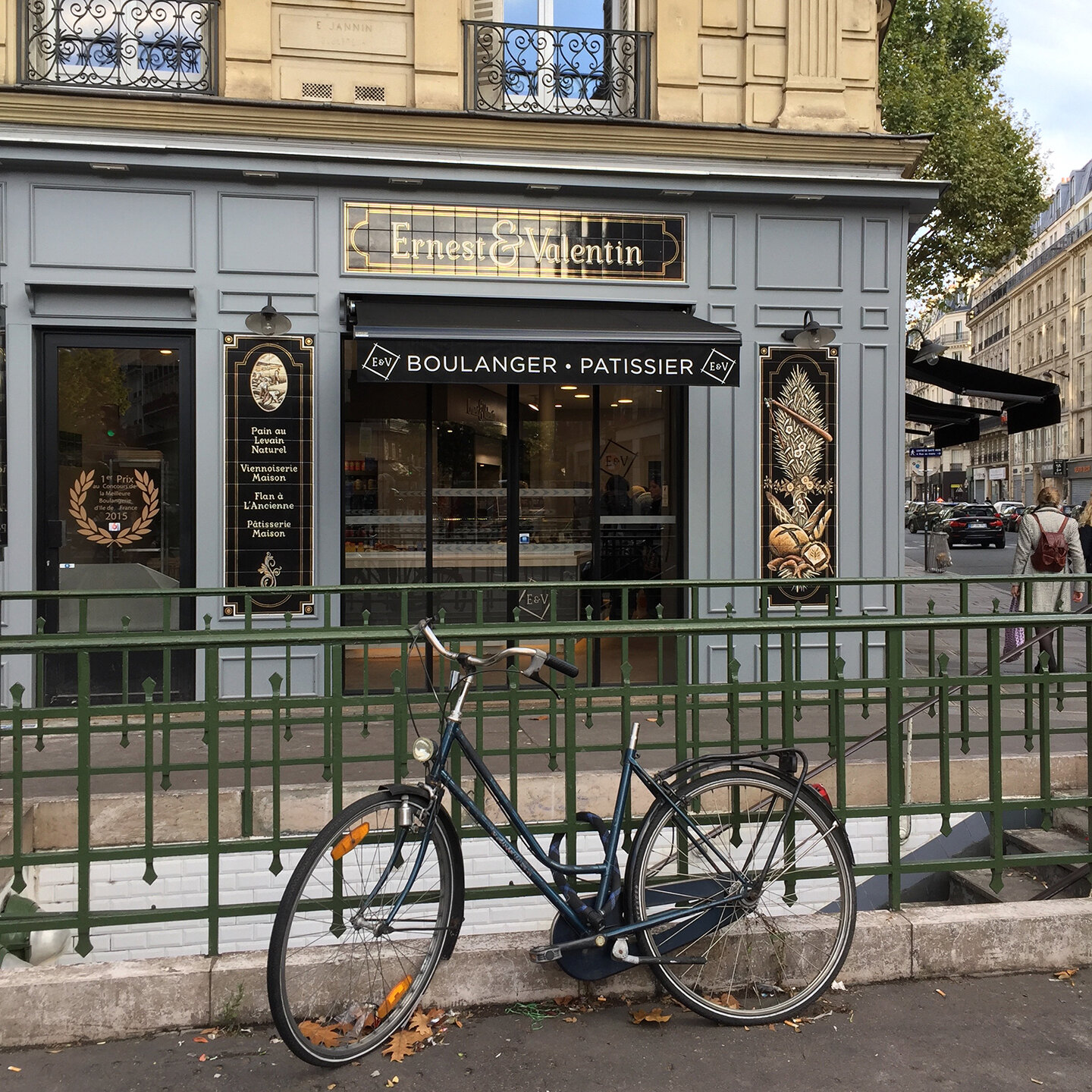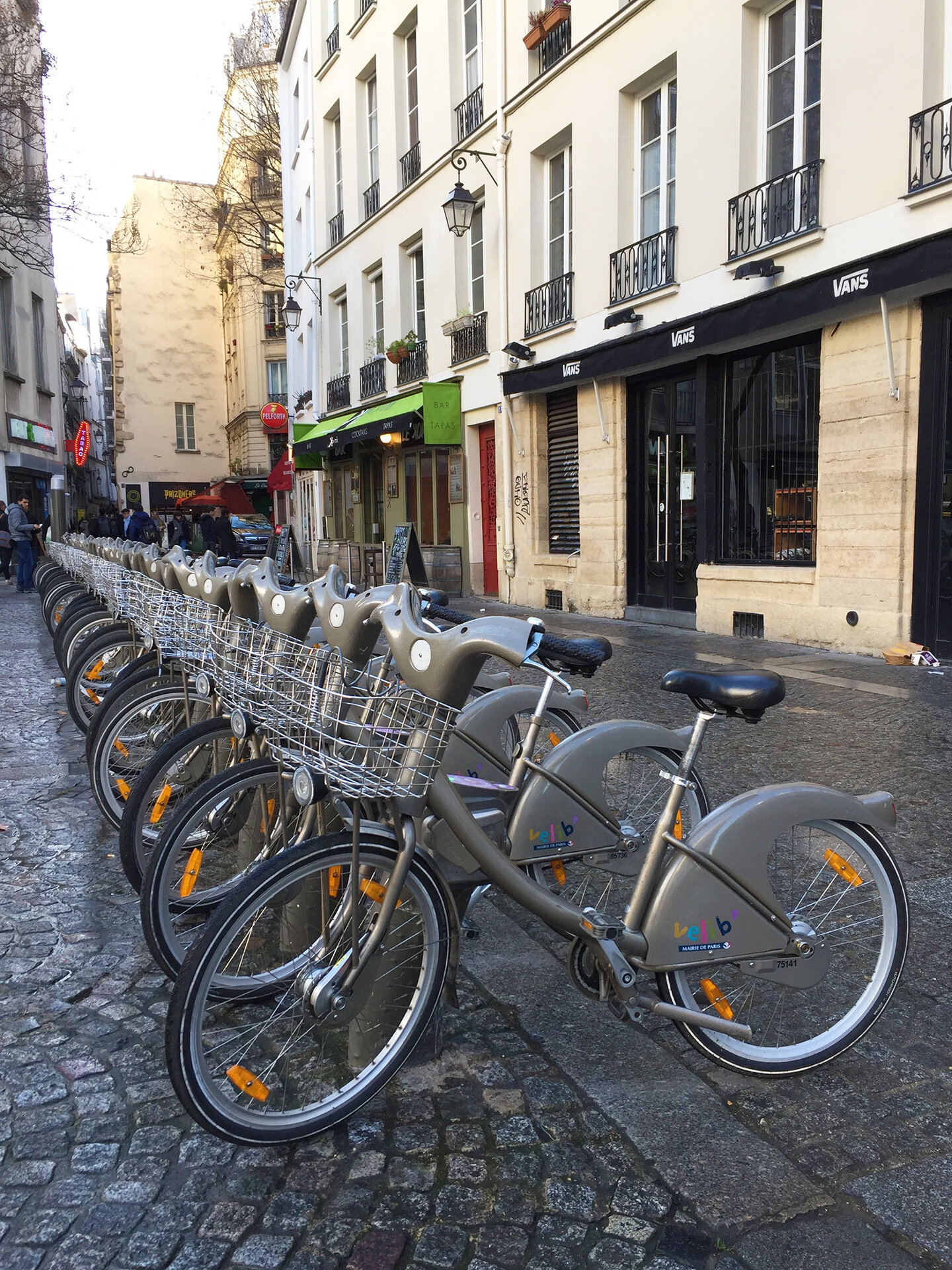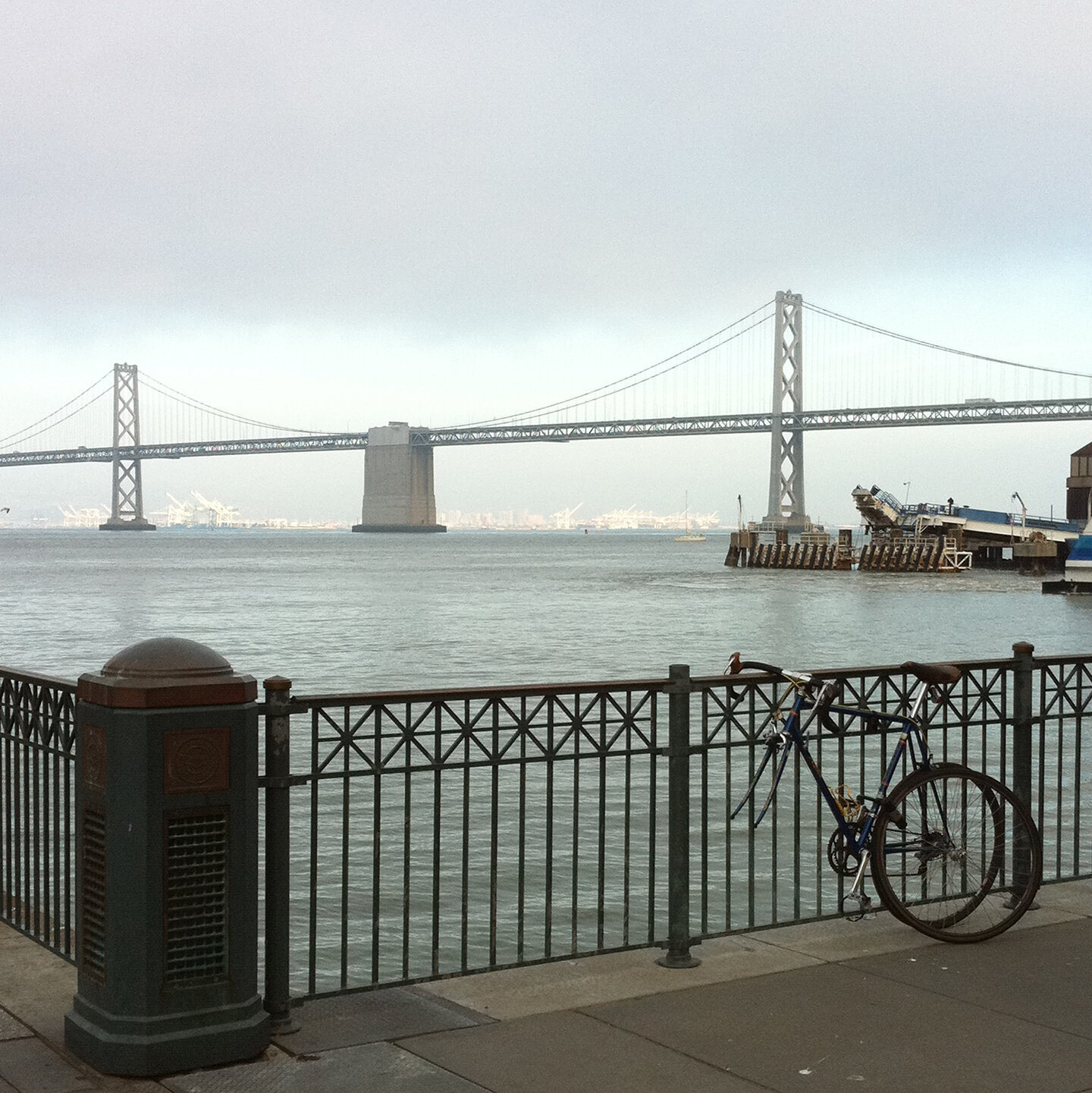During the recent transportation strikes, a significant contingent of commuters dusted off their bicyclettes and rode them to the office. It was especially the case for those living around Paris since they heavily depend on public transportation.
There is always a bike attached to the Fontaine de la Croix-du-Trahoir, 1st arr. Or so it seems.
Have bike and fishing pole, will travel.
A recent segment on French news suggested that a substantial number of them continue to use their bikes even though the métro, RER, and buses are now running normally. For some, it’s a convenient way to schedule some exercise in their daily routine. Others simply enjoy their newfound independence.
Thankfully, it didn’t snow in Paris during the transportation strike!
A bicycle on rue Crémieux, years before the colorful street was “discovered” by Instagrammers
Independence, indeed. Everybody remembers their first bicycle, the apprehension and elation of les petites roues coming off, and the feeling of freedom when mom and dad say you can ride to grandma’s house all by yourself. Your bicycle becomes your most treasured possession until you’re old enough to drive a moped (France) or a car (USA.)
Parked by the marché aux fleurs, on Ile de la Cité
Draisiennes at Musée des Arts et Métiers
French inventors had a creative hand in the development of the bicycle. Although German baron Karl von Drais introduced the first two-wheeler (a.k.a. la draisienne) in 1817, it was only operated by kicking against the street. Through the 19th century, patents filed by Mercier, Michaud or Lallement, added pedals, crank drives, and brakes so the vehicle continued to evolve. Many of those early designs are on display at the often overlooked Musée des Arts et Métiers. Peugeot started selling their first bikes in 1886, Dunlop invented the tire in 1888, and Michelin filed his inner-tube patent in 1891. All this ushered a bicycle Golden Age.
Bike and boats, canal de la Villette.
Parked on rue Ronsard, below the Sacré-Coeur. Fancy saddle bags!
The first cycling competition was held in 1868 in Saint-Cloud. In 1869, one hundred racers competed in the Paris-Rouen race. Bordeaux-Paris and Paris-Brest-Paris started in 1891. Le Tour de France was created in 1903 and remains the premier race in the world.
A bike family on impasse Canart, 12th arr.
Taking a break in front of la Maison des Canaux, 19th arr.
Recreational cycling has always been a popular activity in France. On any given Sunday, you’re very likely to spot groups of friends riding their vélos de course. I was on the front lines of the “folding bike” craze during my early teens. Out in the countryside, we often see couples and families (and luggage!) riding touring bikes. Several of our neighbors cleverly purchased electric bikes: baby boomers love to conquer our hilly terrain with a little help…
Vélib’ station on rue Quincampoix, 3rd arr.
Inspired by the Dutch bicycle rental/sharing model, the city of Paris introduced Vélib’ in 2007 and the grey bikes quickly became ubiquitous. The operator and color scheme changed in 2018 but the transition was chaotic. The system currently includes 20,000 bicycles distributed over 1,100 stations.
BFF in Sarlat
A bike and a bridge, San Francisco
Going through my photo collection, I was surprised that so many of my pictures included bicycles and I’m sharing some of them with you today. I do think they make interesting props whether in Paris, in the countryside, or abroad.
Dry-cleaning delivery in New York
A love letter to Jacqueline in Chicago
Minty bike in Burano
Bicultural bike on rue du Grand Prieuré, 11th arr.
Most of all, bicycles are signs of human presence and activity. Sometimes, they even have stories to tell…
Bike retirement home?
Vocabulary
La bicyclette: bicycle
Les petites roues: lit. small wheels; training wheels
Le vélo de course: racing bike; ten-speed bike



















